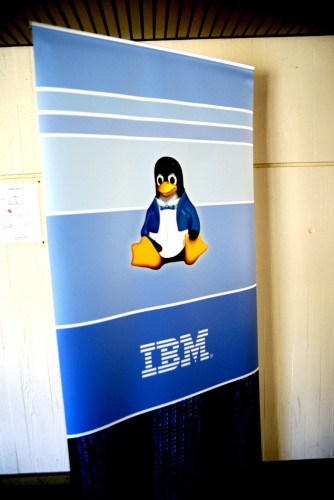
Monetizing open source software can be a tricky challenge for many companies. After all, when you’re giving away your primary product for free, how could you possibly make money off it?
Nicolas Erdody, Paul Gampe, Mark Bathie, and Bob Waldie formed a panel in the Business of Open Source MiniConf at Linux.conf.au 2012 and talked about the various ways companies can hope to monetize Open Source software.
The many models of money making
There are different approaches to make money off free code. We’re surrounded by examples of open source software being used in mainstream applications. These applications could be entirely open source, or sometimes they will simply utilize parts of open source code.
Here are a few models that many companies employ to make some cash off free software.
Value adding to existing community projects
Companies like Red Hat and Canonical take open source software and apply their own additions to form a complete package tailored to suit the needs of enterprise customers the world over. Phone manufacturers like HTC and Samsung add their own skins to Android to create (in their eyes) a differentiating factor for consumers which acts as a selling point on the shop floor.
These value added additions may also include expert support and installation of open source solutions and software, and a lot of companies have made a name by focusing on this industry alone.
Embedding open source software in a product or service
Many home appliances and electronics (smart dishwashers, televisions, set top boxes like Tivo) have some form of open source software in their arsenal, whether it’s simply a couple of libraries or the entire kernel.
Web applications like Facebook and Twitter make extensive use of open source software to build their products. They often develop custom solutions (like Facebook’s haystack) which often end up open source as well.
Open sourcing existing proprietary software
Some companies build software and keep the code in secrecy, but for whatever reason (perhaps licensing was too much trouble) end up open sourcing the code in the end which allows for more contributors, testers, distribution, and more.
Fine tuning or polishing existing software
A prime example would be Ubuntu/Canonical, who have taken open source projects like the kernel and GNOME, polished these up and created a cohesive package which can be installed on OEM devices or delivered to enterprise consumers.
The changing face of open source software
Software Engineers from the 1960s and 1970s said in hindsight they were working on open source – it just wasn’t called that. They just called it “software”.
Eventually companies began developing code in secrecy to maintain a competitive advantage, and only then did the term “open source” eventuate simply as a means of differentiation.
Initially the Linux kernel as we know it today was a volunteer project started by Linus Torvalds in the early 1990s, and most of the contributions came from unpaid volunteers. Nowadays, around 70% of contributions are from paid contributors working for companies which have a vested interest in kernel development.
Open source is moving from a community based system to a vendor-powered system, and this has fast forwarded development and adoption of open source technology. Every year the percentage of software that is open source is increasing, and some suggest that in five years it may even tip 50%.
That is to say, 50% of the world’s software could be open source by 2016.
Open source software is growing in popularity every year, and it’s being driven by vendors who have proven that money can be made off a product which is given away “for free.”
What started out as a community driven project is now powering the most popular websites, products, and appliances around the world, and different methods and models of making profit off open source software are popping up every day.
